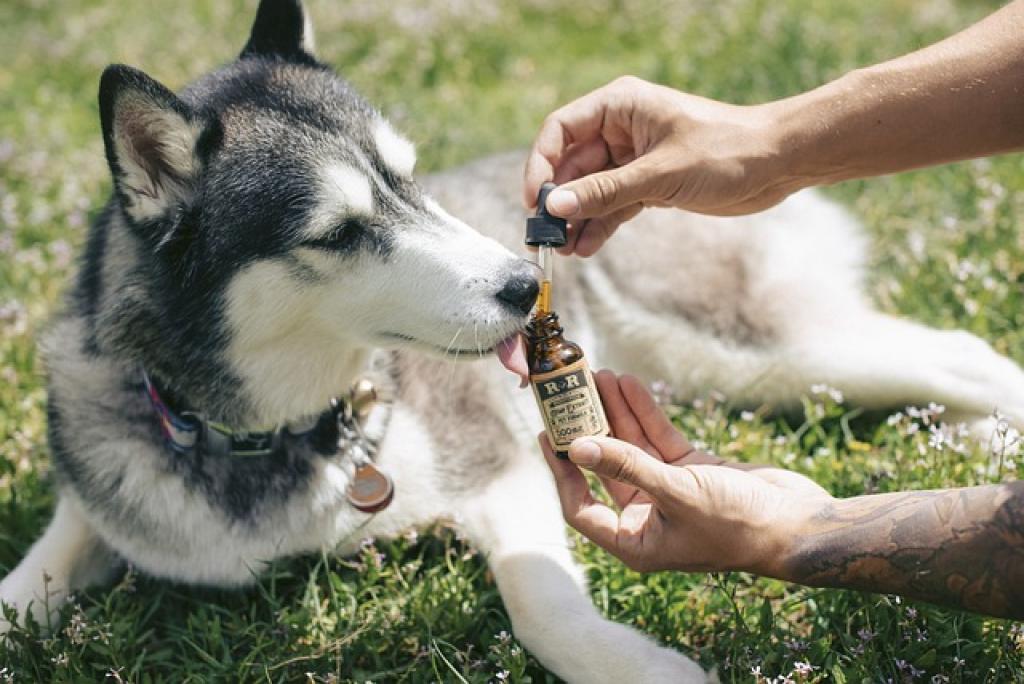Pain that comes with aging is no joke. For many, it’s a daily struggle that can make even the simplest tasks feel daunting. You’ve probably tried countless remedies, from over-the-counter pills to various therapies, but the relief often feels temporary or incomplete.
Enter CBD – the new kid on the block that’s been making waves for its potential to alleviate age-related pain. Unlike traditional painkillers, CBD offers a natural alternative that’s gaining traction for its effectiveness and minimal side effects.
But what exactly is CBD, and how does it work for pain management, especially for those of us getting on in years? In this guide, we’ll dive into everything you need to know about CBD and its potential role in soothing those aches and pains that seem to sneak up with age. Ready to discover if CBD might be the game-changer you’ve been looking for?
CBD Vs. Traditional Pain Management Methods: A Comparison
When it comes to managing pain, most of us are familiar with the usual suspects – over-the-counter painkillers, prescription medications, physical therapy, and sometimes even surgery. These methods can be effective but often come with a laundry list of side effects and risks.
CBD, on the other hand, offers a different approach. Unlike opioids and other strong painkillers, CBD is non-addictive. This makes it an appealing option for those worried about dependence or the need for escalating dosages over time.
With traditional pain management, you might experience side effects like stomach issues, dizziness, or even more severe risks like liver damage. CBD is generally well-tolerated, with most users reporting minimal side effects, such as dry mouth or slight drowsiness.
Another key difference is how they work in the body. Traditional painkillers often block pain signals or reduce inflammation directly. CBD interacts with the endocannabinoid system, which plays a role in regulating various bodily functions, including pain and inflammation. This interaction can create a more holistic balance instead of just masking the pain.
While traditional methods can offer quick relief, CBD provides a more gradual and potentially long-term solution. For those seeking a natural, less invasive option, CBD stands as a compelling alternative.
Benefits of Using CBD for Age-Related Pain
As we get older, aches and pains seem to become part of the daily routine. The good news is that CBD can offer several benefits for managing age-related pain.
One of the biggest perks is its anti-inflammatory properties. Inflammation is a major culprit behind chronic pain, especially in conditions like arthritis. By reducing inflammation, CBD can help alleviate long-term pain without the side effects that often come with traditional anti-inflammatory drugs.
CBD also has relaxing properties that can benefit muscles and joints. This can be particularly useful for seniors dealing with stiffness or mobility issues. A bit of CBD might make those morning stretches a little easier to handle.
Another advantage is that CBD can improve sleep. Many older adults struggle with sleep issues, which can exacerbate pain. By promoting better sleep, CBD helps your body heal and recover, ultimately reducing pain levels over time.
Mental well-being is also crucial in managing chronic pain, and CBD can support this by reducing anxiety and stress. Feeling more relaxed and calm can make a huge difference in how you perceive pain.
Lastly, CBD offers a natural alternative with fewer risks compared to traditional medications. For those looking to avoid the potential downsides of long-term drug use, CBD provides a promising option.
In short, CBD offers a multifaceted approach to managing age-related pain, making those golden years a bit more comfortable and enjoyable.

Understanding How CBD Interacts with the Body’s Pain Pathways
So, how exactly does CBD manage to ease pain? It all comes down to how it interacts with our body’s pain pathways and systems.
Our bodies have an internal system known as the endocannabinoid system (ECS). Think of it as a vast network of receptors that help regulate numerous functions, one of which is pain. CBD interacts with these receptors, particularly the CB1 and CB2 receptors, found throughout the body.
When CBD binds to these receptors, it helps modulate pain signals. This can either dull the sensation of pain or reduce its intensity. It’s like turning down the volume on your pain “radio.”
CBD also influences the release of natural painkillers. Your body produces endocannabinoids that help manage pain and inflammation. By boosting these compounds, CBD enhances your body’s ability to handle pain naturally.
Another interesting aspect is that CBD impacts other receptors involved in pain regulation, such as serotonin receptors. Serotonin plays a role in your mood and pain perception. By increasing serotonin levels, CBD can create a calming effect, helping to take the edge off pain.
Additionally, CBD has anti-inflammatory properties that work on reducing inflammation at the source. This combined effect of blocking pain signals, boosting natural painkillers, and reducing inflammation creates a multifaceted approach to pain relief.
In sum, CBD’s interaction with the body’s pain pathways offers a comprehensive and natural method to tackle chronic pain issues, making it a valuable option for those looking to find relief.
Choosing the Right CBD Product for Managing Age-Related Pain
Finding the right CBD product for managing age-related pain can feel like a daunting task, but it doesn’t have to be! Here’s a little guide to help you out.
First, let’s talk about the types of CBD products available. The most common forms include tinctures, capsules, topicals, and edibles. Each type has its own set of benefits, and the best one for you depends on your specific needs.
Tinctures and Capsules
Tinctures are liquid extracts that you can take sublingually (under your tongue) for quick absorption. They’re great if you’re looking for fast relief. Capsules, on the other hand, are just like any other pill. They’re easy to take, and you know exactly how much CBD you’re getting with each dose.
Topicals and Edibles
Topicals, like creams and balms, are fantastic for targeted pain relief. Have a sore knee or achy hands? Just rub a CBD-infused cream right where it hurts. Edibles, such as gummies or chocolates, are tasty options that make dosing feel like a treat. However, they may take a bit longer to kick in since they have to be digested first.
Another thing to consider is the dosage. With age-related pain, starting low and going slow is usually a good approach. Begin with a lower dose and gradually increase it until you find the sweet spot that delivers relief.
Always look for high-quality CBD products. Check for third-party lab testing results to ensure the product is free from harmful contaminants and has the amount of CBD advertised on the label.
Finally, consult your healthcare provider before trying CBD, especially if you’re on other medications. They can help guide you on the best approach to integrating CBD into your pain management routine.
By finding the right product and dosage, you can ease your age-related pain and get back to enjoying life without the constant discomfort. Happy exploring!
Exploring Clinical Studies on CBD’s Efficacy in Relieving Pain
When it comes to understanding how effective CBD is for pain relief, diving into clinical studies can be incredibly enlightening. Researchers have been increasingly interested in CBD’s potential to manage various types of pain, including those associated with aging.
Chronic Pain and Arthritis
One of the most compelling areas of study is chronic pain, particularly arthritis. Several studies have shown promising results. For instance, an animal study published in the European Journal of Pain demonstrated that applying CBD topically could help reduce inflammation and pain due to arthritis, without causing any obvious side effects.
Neuropathic Pain
Neuropathic pain, often a byproduct of aging, has also been the focus of several clinical trials. A small but insightful study published in the Journal of Experimental Medicine found that CBD significantly reduced chronic neuropathic pain and inflammation in rodents. These findings opened doors for human trials, which are increasingly showing similar promising results.
Researchers have also been investigating the safety profile of CBD. Unlike some pain management methods, CBD appears to have a lower risk of side effects. This can make it a particularly attractive option for older adults who may be wary of traditional pharmaceuticals.
Stay tuned as more comprehensive studies continue to emerge. With ongoing research, the future looks bright for CBD as a natural and effective solution for managing age-related pain.
Common Misconceptions About CBD and Pain Relief
Despite the growing interest in CBD, there are still several misconceptions floating around that can make it tricky to understand its true potential.
One common myth is that CBD will get you “high.” Unlike THC, the psychoactive compound in cannabis, CBD does not induce a high. It’s completely non-psychoactive, making it safe for daily use without altering your state of mind.
Another misconception is that CBD works instantly for pain relief. While some people may experience immediate benefits, especially with topical applications, it often takes consistent use over time to notice a significant reduction in pain.
Some believe that higher doses of CBD are always better. In reality, the effectiveness of CBD can vary greatly from one person to another. Starting with a lower dose and gradually increasing it is generally recommended to find what works best for you.
Lastly, there’s a misunderstanding that all CBD products are the same. The quality of CBD products can differ immensely, so it’s essential to choose reputable brands that provide third-party lab testing to ensure purity and potency.
Clearing up these misconceptions can help you make more informed decisions and get the most out of your CBD experience.
Incorporating CBD into Your Daily Routine for Pain Relief
Adding CBD to your daily routine can be a straightforward and beneficial process. Here’s how you can seamlessly make it part of your life.
First, identify the form of CBD that suits you best. There are oils, capsules, gummies, and topicals. For general pain relief, CBD oil or capsules are popular choices, as they provide systemic effects that target pain throughout your body.
Next, pick a time of day that works for you. Some prefer taking CBD in the morning to manage pain and stress throughout the day, while others find it beneficial before bedtime for a good night’s sleep.
Consistency is key. Take your chosen form of CBD around the same time each day to help you remember and to give your body a steady supply.
Listen to your body. Start with a lower dose and monitor how you feel. Gradually increase the dosage until you find the level that provides the best relief without any undesirable effects.
Pair CBD with other healthy habits. For example, combining CBD with stretching or light exercise can enhance its pain-relieving benefits.
By making CBD a regular part of your daily routine, you can more effectively manage pain and improve your overall well-being.
The Bottom Line: Making Informed Decisions About CBD for Age-Related Pain Management
In summary, CBD has shown promising potential for managing age-related pain, providing relief without the side effects associated with some traditional medications. It’s crucial, however, to approach it with an informed mindset.
First and foremost, consult with your healthcare provider. They can help you determine if CBD is a suitable option for your particular needs and guide you on how to incorporate it safely into your current regimen.
Next, take the time to research reputable brands. Look for products that have undergone third-party testing to ensure quality and consistency. This step cannot be overemphasized; it makes all the difference in the effectiveness and safety of your CBD use.
Start with a low dose and gradually increase until you find the amount that works best for you. The key is patience and attentiveness to your body’s responses. CBD isn’t a one-size-fits-all solution; everyone’s experience with it will differ.
Additionally, be mindful of the form of CBD you choose. Whether it’s oils, gummies, or topicals, each has its advantages and considerations. Select one that aligns with your lifestyle and pain management needs.
Lastly, remember that CBD should be part of a holistic approach to health. Pair it with other healthy habits like regular exercise, a balanced diet, and adequate sleep for the best results.
Ultimately, making informed decisions about CBD involves a combination of professional guidance, thorough research, and careful self-monitoring. By doing so, you can optimize its benefits and manage your age-related pain more effectively.






